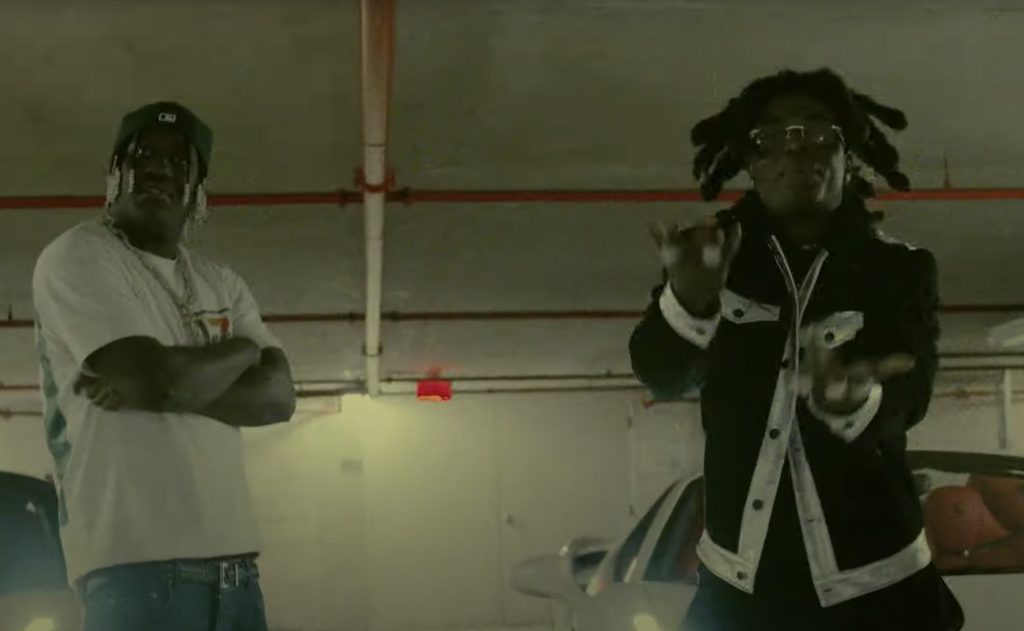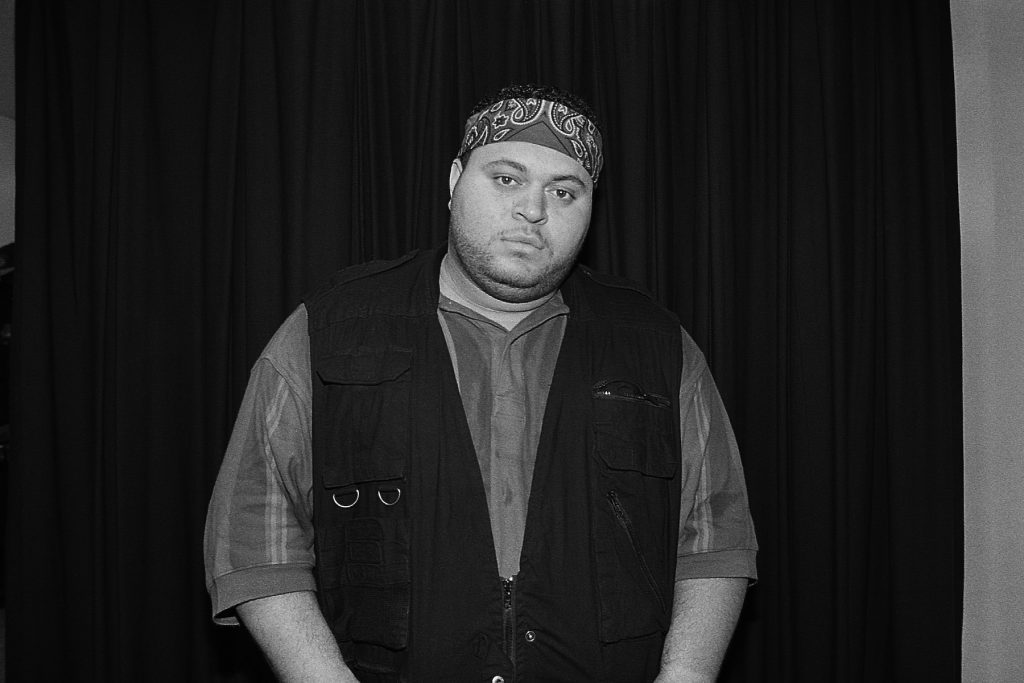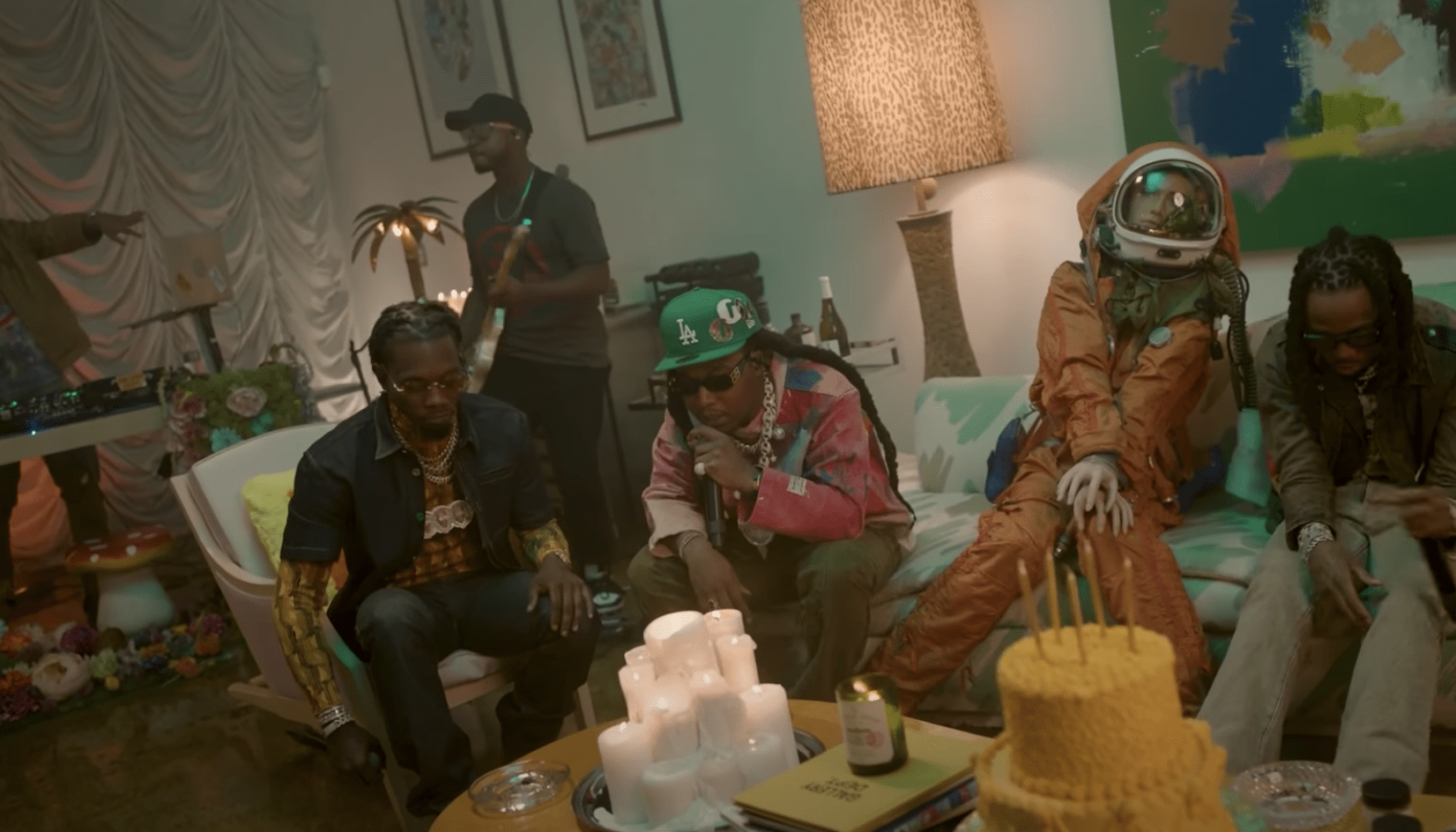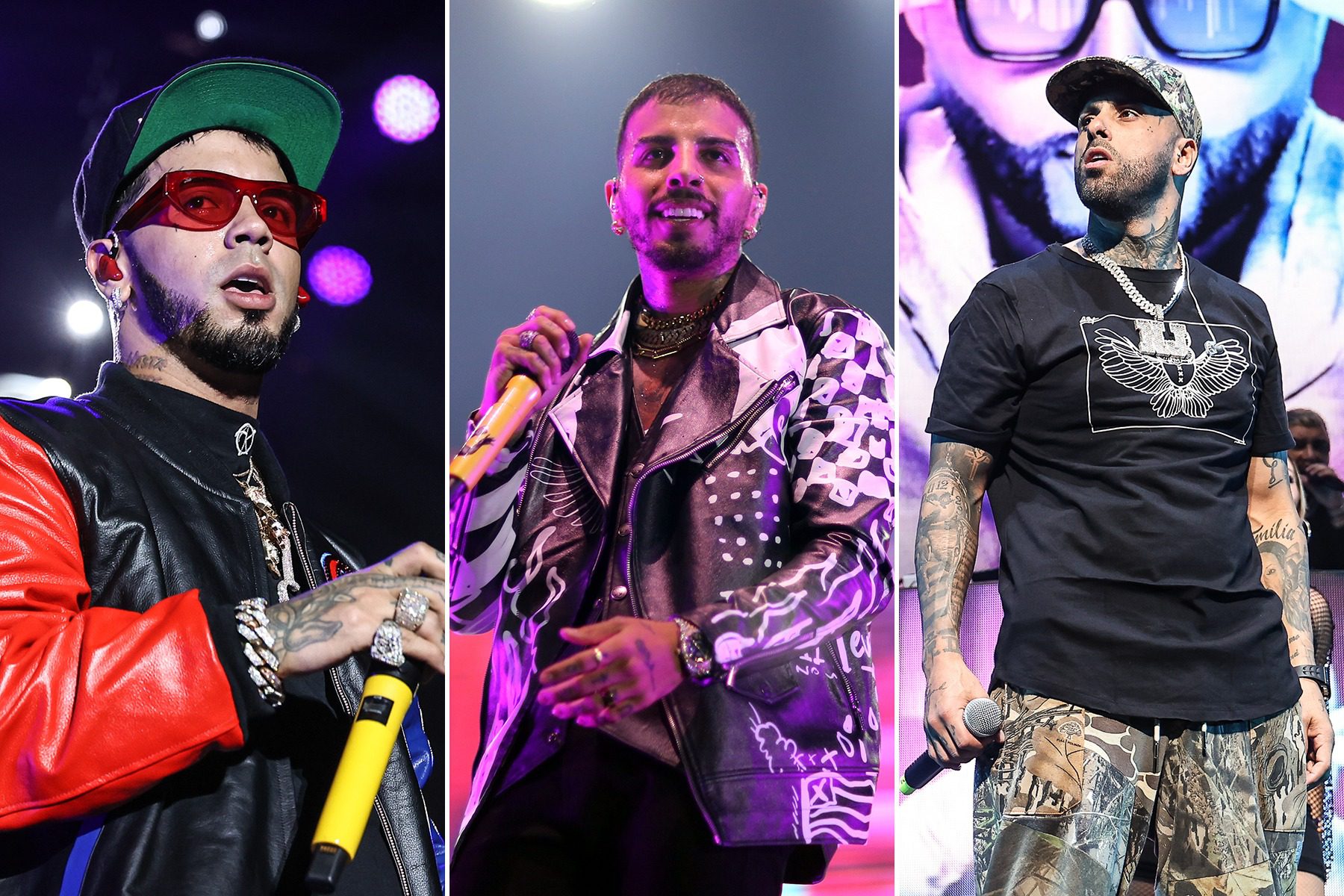
The Fat Boys: Hip-Hop’s Pop Culture Ambassadors on Crushin’ 1987
On August 14th, 1987, pioneering hip-hop heavyweights the Fat Boys cemented their status as one of rap’s premier pop culture ambassadors with the simultaneous release of their platinum-selling fourth album Crushin’ and their breakout comedy Disorderlies. With a matchless mixture of skills, charisma, a tireless work ethic, a sense of humor and a powerful mouth-powered rhythm machine, the trio of Mark “Prince Markie Dee” Morales, Damon “Kool Rock-Ski” Wimbley and Darren “Buff Love” Robinson (a.k.a. “the Human Beatbox”) was integral in bringing rap music to the attention of mainstream audiences. Their ubiquity in 1987 was the peak of a pop cultural coup d’état: a platinum album, a hit single with the Beach Boys, a movie, an appearance on Hollywood Squares and more.
By 1987, the Fat Boys had already experienced an impressive measure of success and notoriety, helping to develop and shape hip-hop’s early years on wax. Their first two albums, 1984’s self-titled debut and 1985’s The Fat Boys Are Back, were produced by rap legend Kurtis Blow and were certified Gold on the back of hits like “Can You Feel It?,” “Jail House Rap,” and “The Fat Boys Are Back.” Often sharing the stage with pioneering contemporaries like Run-D.M.C. and Whodini, the trio was a major part of hip-hop’s early mass-marketed concerts and tours, most notably “Fresh Festival ’84” and 1985’s “Fresh Fest II.” Robinson, Wimbley and Morales appeared in two 1985 films, Knights of the City and the hip-hop classic Krush Groove. They could also be seen on televisions across America via a series of commercials for Swatch watches (a successful marketing move orchestrated by manager Charlie Stettler) and a 1986 episode of Miami Vice.
blogherads.adq.push(function () {
blogherads
.defineSlot( ‘medrec’, ‘gpt-dsk-tab-article-inbody1-uid0’ )
.setTargeting( ‘pos’, [“mid-article”,”mid”,”in-article1″,”mid-article1″] )
.setSubAdUnitPath(“music//article//inbody1”)
.addSize([[300,250],[620,350],[2,2],[3,3],[2,4],[4,2]])
;
});
But for all of the various achievements Fat Boys pulled off throughout the early 1980s, nothing could quite prepare them for the monumental-yet-bittersweet victories that awaited them in 1987. Crushin’ became the Fat Boys’ only platinum album – but in their minds, that accomplishment came with a hefty cost.
“I’ll be absolutely honest with you, Crushin’ was our worst album to do, even though it was our most successful,” says Morales. “We felt like it was the beginning of our downfall, specifically because of [hit cover] ‘Wipeout.’ … Before Crushin’, we just made regular hip-hop music, but when we started doing crossover songs, a lot of our audience didn’t want us to do that.”
After 1986’s crossover smash success of Run-D.M.C.’s “Walk This Way” collaboration with Aerosmith’s Steven Tyler and Joe Perry, Stettler wanted his group to refine and personalize the formula with their own cover song featuring a well-known rock band.
“Us doing ‘Wipeout’ came pretty naturally out of the Beach Boys being in the ending of Disorderlies,” says Wimbley “‘Walk This Way’ was huge and our manager really wanted a breakout hit like that for us. He actually came to us with the idea on the first day of shooting the movie and told us all about Brian Wilson’s genius as a producer.”
After meeting Wilson, Mike Love and Bruce Johnston on the Disorderlies set, they struck up a creative partnership that produced the song and music video that quickly became a MTV mainstay. “Wipeout” ended up peaking at Number 12 on the Billboard Hot 100 and Number 10 on the Billboard Hot R&B/Hip-Hop Songs charts, an undeniable signal that Fat Boys, and hip-hop itself, had reached mainstream cultural consciousness.
“At first we were against it because when we listened to the original ‘Wipeout,’ we were like, ‘Man, we can’t rap to that,’ laughs Wimbley. “But when we got in the studio, they slowed it down, put a Miami bass beat behind it, and we rocked with it.”
blogherads.adq.push(function () {
blogherads
.defineSlot( ‘medrec’, ‘gpt-dsk-tab-article-inbody2-uid1’ )
.setTargeting( ‘pos’, [“mid-article2″,”mid”,”in-article2″,”mid-article”] )
.setSubAdUnitPath(“music//article//inbody2”)
.addSize([[300,250],[300,251],[620,350],[2,4],[4,2],[3,3]])
;
});
“It was a great experience to be in the studio with the Beach Boys,” gushes Morales. “Those guys were so cool to us. I was blown away.”

“Wipeout” ended up being the last song Fat Boys recorded for Crushin’. The group actually chose the laid-back electro-funk of “Falling in Love” as the album’s lead single and they recorded a pro-safe sex anthem called “Protect Yourself” that had its inspirational roots in a request from 1980s sex therapist Dr. Ruth Westheimer.
“With teenage pregnancy, STDs and AIDS being so huge on the scene at that time – Prince’s Sign o’ the Times came out that same year – we really wanted to be a part of all that,” says Wimbley. “Most people didn’t expect something like ‘Protect Yourself’ to come from us.”
Beyond the album, the Fat Boys bum-rushed movie theaters as well with 1987’s Disorderlies, the first film to star hip-hop artists not confined to a hip-hop bubble. In the film, Morales, Wimbley, and Robinson play bumbling orderlies tasked with assisting an ailing billionaire whose nephew only hired the trio in hopes that their ineptitude would get him his inheritance faster. Disorderlies was directed by Michael Schultz (Cooley High, Car Wash) who had worked with the Fat Boys on Krush Groove and was immediately struck by their charismatic personalities and electric chemistry.
“Krush Groove was supposed to just be based around Run-D.M.C., but Michael Schultz really took a liking to us and he kept writing us into more and more scenes,” says Wimbley. “Some folks felt we stole the show a bit on Krush Groove, so Warner Brothers went to our manager and said they wanted to do a movie deal with us.”
In fact, Warner Brothers liked them so much, the offer was actually a three-picture deal.
“Disorderlies was the first,” says Morales. “The second was going to be a horror-comedy film we wrote ourselves called Fat Tuesday that took place during Mardi Gras, but for various reasons it never happened.”
The mutual admiration that Schultz and Fat Boys formed on Krush Groove easily carried into the filming of Disorderlies, with Wimbley and Morales each having fond memories about the filming process.
“Everything was different between the two movies,” laughs Wimbley. “It was literally going from our block in Brooklyn to Beverly Hills. The food was better. We had dressing rooms. We got paid on time.”
blogherads.adq.push(function () {
blogherads
.defineSlot( ‘medrec’, ‘gpt-dsk-tab-inbodyX-uid2’ )
.setTargeting( ‘pos’, [“mid”,”mid-articleX”,”in-articleX”,”mid-article”] )
.setSubAdUnitPath(“music//article//inbodyX”)
.addSize([[300,250],[300,251],[3,3],[620,350]])
.setLazyLoadMultiplier(2)
;
});
The mansion used throughout the film – previously used as the Clampett’s mansion in the 1960s sitcom The Beverly Hillbillies – proved to be its own playground for the group. “The mansion was huge!” exclaims Morales. “It had tunnels and all these secret compartments. I would play tennis everyday on lunch. It was one of the most amazing experiences of my life!”
However, one of Morales’s strongest memories is about how an on-camera scene played out negatively after the cameras stopped rolling: “At the time we were filming, I was engaged to Pep from Salt-N-Pepa and I flew her out to California for like a week so she could hang out with me while I was filming. However, her first day on set was the day I had to film that kissing scene with Troy Byer. Pep got super jealous and she spent the whole week mad at me. It was horrible!”
Disorderlies opened in the Top 10 during its first weekend and ended up earning over $10 million during its theatrical run – a significant statement to the crossover appeal of the Fat Boys. Though the film’s soundtrack featured a musically diverse roster of songs from artists like Bon Jovi, Bananarama and Art of Noise, it was the Fat Boys who naturally scored the opening track and lead single with their on-the-nose cover of the Beatles’ “Baby, You’re a Rich Man,” a recording they made at the request of the Warner Brothers executives.
The day before Disorderlies opened in theaters, the Fat Boys made an appearance on Regis Philbin and Kathie Lee Gifford’s highly popular morning talk show The Morning Show. The interview segment was both sincere and awkward.
“We were so young at the time and we had no experience in the music business and no one teaching us how to conduct ourselves during interviews,” says Morales. “Regis was amazing though. He was so good to us and he helped us through it on and off camera.”
“He’s a New Yorker,” says Wimbley, “so he liked us and was down with what we were doing.”
However, one part of The Morning Show experience hit a bit of a sour note. After Philbin spent a few minutes promoting Crushin’, “Wipeout” and Disorderlies (and feebly attempting to beatbox), he introduced “three of the biggest surprises you ever saw in your life,” and brought out a gender-flipped “tribute group” known as the Fat Girls.
blogherads.adq.push(function () {
blogherads
.defineSlot( ‘medrec’, ‘gpt-dsk-tab-inbodyX-uid3’ )
.setTargeting( ‘pos’, [“mid”,”mid-articleX”,”in-articleX”,”mid-article”] )
.setSubAdUnitPath(“music//article//inbodyX”)
.addSize([[300,250],[300,251],[3,3],[620,350]])
.setLazyLoadMultiplier(2)
;
});
“We had no idea about the Fat Girls thing,” says Wimbley. “To be honest with you, we really didn’t like that kind of stuff. We were serious about what we were doing and we didn’t understand the humor of it at the time. Now, we get it. ‘Imitation is the highest form of flattery’ and all that.”
During the latter half of 1987, the Fat Boys continued to pop up on television, including an episode of the Ebony/Jet Showcase they shared with Whitney Houston, the “Burger Pattern” segment of the PBS children’s educational show Square One and an episode of Hollywood Squares alongside such celebrities as Joan Rivers, Lynn Redgrave, Roy Clark and Richard Simmons. The group proved to be fan favorites to the majority of the Radio City Music Hall studio audience. “People kept screaming for us so much that the producer had to come out and remind everyone to be quiet so the celebrities could answer the questions,” says Wimbley.

However there was a little friction between them and at least one of the celebrity guests. “I was smoking a cigarette when we got on the freight elevator and Richard Simmons looked at me and said, ‘That’s disgusting,’” says Morales. “Me being a young Brooklyn guy, I had some choice words for him, not thinking that he might be heading to the same show as us. When we got upstairs, we tried to vibe with him but he just kept looking at me like he wanted to stab me with a fork or something.”
Going into 1988, Fat Boys continued to ride the wave of fame into a variety of other creative opportunities, including appearing on Mr. T’s short-lived Canadian sitcom T and T, recording “Are You Ready for Freddy?” for A Nightmare on Elm Street 4: The Dream Master soundtrack and being invited to the 1988 Grammy Awards (even though it would be another year before the Grammys had a rap category). During the ceremony, the Fat Boys presented an award and appeared during the show’s all-star finale of “Runaround Sue” led by Dion. However, for Wimbley, the evening’s most memorable event happened off camera.
“While we were backstage, Michael Jackson actually came over to us and said, ‘It’s a pleasure to meet you. I love what you’re doing and every time I turn my TV on, you guys are there,’” he says. “When it was time to go home, our heads couldn’t even fit inside the car.”
blogherads.adq.push(function () {
blogherads
.defineSlot( ‘medrec’, ‘gpt-dsk-tab-inbodyX-uid4’ )
.setTargeting( ‘pos’, [“mid”,”mid-articleX”,”in-articleX”,”mid-article”] )
.setSubAdUnitPath(“music//article//inbodyX”)
.addSize([[300,250],[300,251],[3,3],[620,350]])
.setLazyLoadMultiplier(2)
;
});
As noted by the King of Pop, the Fat Boys were stars across media in 1987, a scenario that may have ultimately impacted the group’s legacy. They’re often remembered as the comical group that was a pop-crossover success story in 1987, not the pioneering rhymesayers behind one of rap’s first great full-length albums (1984’s Fat Boys) and no shortage of phenomenal 12-inches in the days before Yo! MTV Raps.
“It’s impossible not to mention us in the same breath as Run-D.M.C., but we’re not always getting the props we deserve,” says Wimbley. “I think some people slight us because of the name or they only go by the songs that mention food and not classics like ‘Can You Feel It?’ or songs like that. Some people slight us without knowing the impact we had on the rap game. We opened doors for groups like Big Daddy Kane, Heavy D and Doug E. Fresh who often said that they were able to pick up the shows that we had to turn down because we were doing so much at the time.”
“As far as our peers are concerned, I think we get a lot of love and recognition,” says Morales. “As far as the media though, I think we totally get ignored. … I think people look at Run-D.M.C. and Whodini as hip-hop artists and they look at us as comedians. I’m not exactly mad at that, because we were trying to make people laugh and feel comfortable with being exactly who they were – fat, skinny, tall, short, gay, whatever. That’s the impression we wanted to leave on the world.”
“These guys revolutionized rap before it was hip-hop and proved it had commercial viability,” says their current manager, Louis “Uncle Louie” Gregory. “They are truly the epitome of what transpires when tremendous music and stellar marketing make their way to the radio.”
However, there is one area of the group’s legacy that everyone from casual fan to hip-hop historian can agree on and that is the innovative sonic stamp of Buff Love’s often imitated, never duplicated beatboxing.
“People are impressed by what they hear on record or video, but you can’t really grasp the true extent of how amazing Buff was unless he did his thing in front of you,” says Morales. “When he was making beats with just his mouth, you could truly feel it in your chest like a kick drum. It was so loud, crisp and clear.”
blogherads.adq.push(function () {
blogherads
.defineSlot( ‘medrec’, ‘gpt-dsk-tab-inbodyX-uid5’ )
.setTargeting( ‘pos’, [“mid”,”mid-articleX”,”in-articleX”,”mid-article”] )
.setSubAdUnitPath(“music//article//inbodyX”)
.addSize([[300,250],[300,251],[3,3],[620,350]])
.setLazyLoadMultiplier(2)
;
});
After Crushin’, the Fat Boys released a fifth album, Coming Back Hard Again, in 1988, which was propelled by two rock covers, “Louie Louie” and the MTV staple “The Twist” with Chubby Checker. The final album as a trio, 1989’s On and On yielded no such success and soon Morales left the group for a career as a solo artist and a songwriter/producer with his hands in songs like Mary J. Blige’s “Real Love” and Mariah Carey’s “Anytime You Need a Friend.” Robinson died in 1995 at the age of 28.
But the Fat Boys legacy lives on. In the last few years, Drake, Future, 2 Chainz and Meek Mill have all interpolated the Fat Boys’ iconic “Brrrrrrr … stick ’em” from their debut album. Action Bronson’s “Let Me Breathe,” a song from his upcoming Blue Chips 7000 borrows the beat from “The Fat Boys Are Back.”
For Morales and Wimbley, they are most pleased with what remains when you strip away all of the extracurriculars – the television appearances, the films, the award shows – and you’re just left with their music.
“I think we contributed a lot to hip-hop and we truly helped bring it to the masses,” asserts Morales. “Overexposure may have lead to us fizzling out, but we had a real good run.”
“The legacy of the music itself?,” Wimbley asks. “I’m real proud of it.” After a short pause, he adds with a chuckle, “Well, maybe like 97 percent of it. I could’ve done without ‘Louie, Louie.’”
Editor’s Note: A version of this story was originally published in August 2017




